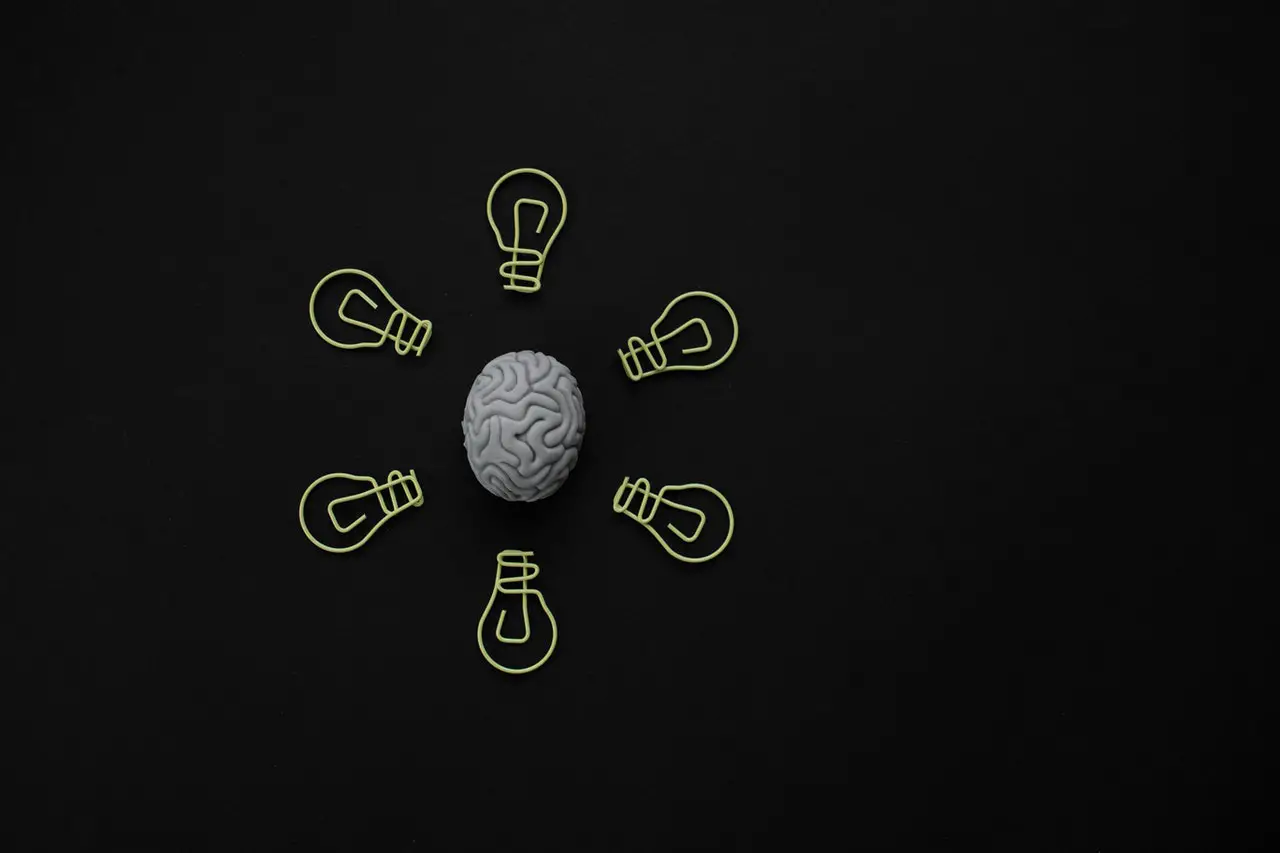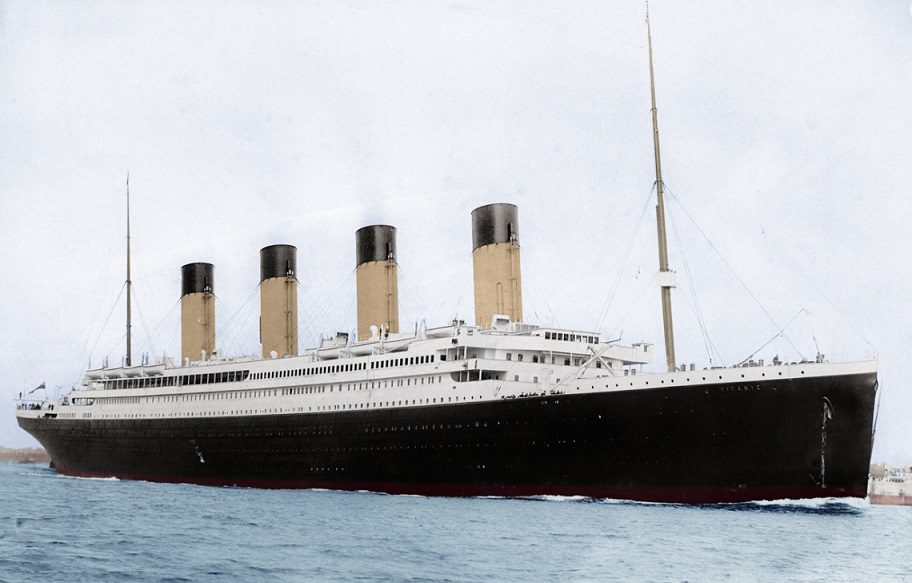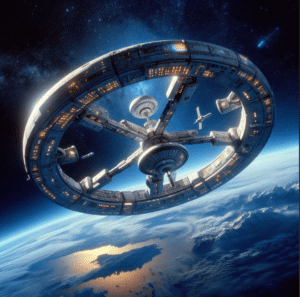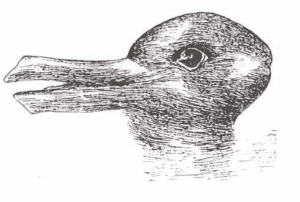
- Search Search Search …
- Search Search …

Critical Thinking Vs. Negative Thinking

When someone is being ‘critical’ of something, it generally means they are looking on it unfavorably, pointing out its flaws and shortcomings. That being the case, one could be forgiven for assuming that critical thinking and negative thinking are the same thing. However, this is not actually the case. The two forms of thinking are entirely different.
Critical thinking is when you consider all aspects of a situation, both good and bad, from an analytical point of view. Negative thinking is solely considering the bad aspects of a situation, refusing to acknowledge or believe that any positive outcome is possible.
Of course, it runs a little deeper than that, but rest assured, we’ll go into greater detail about what critical thinking really is, and how it differs from negative thinking , as well as its opposite form of thought, positive thinking. Critical thinking versus negative thinking is a little more complex than it seems at first!
What is Negative Thinking Really?
Negative thinking is very much like pessimism: with negative thinking, you see the bad in every situation. But there’s nothing wrong with that in and of itself. Critical thinkers see the bad in most situations as well. However, negative thinking completely ignores positive possibilities and outcomes and only considers negative ones.
This is opposed to critical thinking, which is a balanced analytical approach to a situation or problem. Negative thinking precludes the possibility of positive outcomes or considerations. Positive outcomes will either not occur to someone using negative thinking, or if they do, they will be instantly dismissed as pointless without due consideration.
Now, it’s human nature to predominantly focus on bad things or possibilities. When everything is normally going fine in life, one problem can seem like a big deal, even compared to the fact that one’s life is generally going pretty well. When a sticky situation arises, it’s natural to focus on the bad, which is why critical thinkers often have to remind themselves to focus on the good as well.
Is Critical Thinking the Opposite of Negative Thinking?
Seeing as how these are the two types of thinking we are discussing, one could be forgiven for assuming that they are polar opposites, but critical thinking is not the opposite of negative thinking. That would be positive thinking, which does exactly what it sounds like: it considers only the positives, without the negatives being given a single thought.
People will often refer to that kind of thinking as optimism, and it is generally seen as desirable, whereas pessimism is not. However, like with most extremes, blind optimism is just as flawed a thought process as pure pessimism is. After all, some situations do have negative aspects that need to be considered, not ignored.
Critical thinking is the middle ground between these two types of thought: it’s not about picking and choosing to acknowledge or ignore either the good or the bad. It’s about taking both sides into consideration equally. An easy example of critical thinking versus the other two types of thinking is the lottery.
Imagine that you are considering playing the lottery. Positive thinking would result in you telling yourself that you will definitely win, and that losing is an impossibility. Negative thinking will have you telling yourself that losing is the only possible outcome, and winning is impossible. Critical thinking acknowledges that the odds of winning are low, but not zero, and that either outcome could happen.
Is Critical Thinking About Perfect Balance?
While critical thinking may be a mix between positive and negative considerations, that does not mean that the two forms of thought have to be perfectly balanced in any situation. Let’s return to our lottery example to see what we mean.
If you buy a lottery ticket, negative thinking says you will lose. Positive thinking says you will win. But critical thinking, balancing the two, does not mean you assume that you will have equal chances of both winning and losing. There’s a 99.9% chance you won’t win, and an infinitesimal chance that you’ll win. Critical thinking acknowledges this.
If a situation has many bad aspects and only a few good ones, critical thinking should accurately acknowledge that reality. It’s not about trying to balance the good and the bad, it is only about acknowledging that both sides exist in a given situation. And if there truly is no positive or negative side to things, critical thinking acknowledges that as well.
Critical thinking is not about balancing the good and bad, it’s only about acknowledging the true reality of the situation, including all of its possibilities and outcomes, be they good or ill. Only considering the good or the bad is a great way to put yourself in a tight spot, which is why you should always employ critical thinking skills .
Critical Thinking Vs Negative Thinking
Critical Thinking vs Negative Thinking
You may also like

Masterclass vs Coursera: An In-depth Comparison for Eager Learners
Choosing the right online learning platform can be a crucial decision for individuals seeking personal development, career advancement, or acquiring new skills. […]

5 Critical Thinking Exercises for a Healthy and Alert Brain
Critical thinking is the ability to translate complex circumstances into meaningful insights. It has become an essential skill that every individual should […]

Are Problem Solving and Critical Thinking the Same? Debunking the Common Misconception
Problem solving and critical thinking are often considered synonymous, but they are two separate skills with distinct strategies, purposes, and applications. Understanding […]

Best Children’s Books on Critical Thinking: Top Picks for Young Minds in 2023
Introducing children to critical thinking at an early age is essential for their cognitive development. Engaging in thought-provoking activities not only helps […]
Critically Thinking About Select Societal Issues
What's the opposite of critical thinking, as you'll see, there's a lot of this going on.
In my last commentary , I elaborated on a proposed definition of Critical Thinking. Although there were a few suggested refinements, I received no major objections. (If you have any, please put them in the comments below.)
Equally important is what Critical Thinking is NOT. Towards that end, in my most recent article, I outlined a brief layperson overview of some actions that would be considered the opposite of Critical Thinking :
People accepting what is currently politically correct , going along with consensus , deferring to experts , supporting the conclusions of computer programs , buying into one-sided presentations of facts , etc., etc.
I thought I would again test out the new version of Poe AI: Claude-3.5-Sonnet , to see what it had to say about that question — and the answer was rather good:
“The opposite of Critical Thinking could be described in several ways, depending on the context and specific aspects of Critical Thinking being considered. Some possible opposites or contrasts to Critical Thinking include:
Uncritical Thinking: Accepting information or ideas without questioning or analyzing them. Gullibility: Being easily persuaded or deceived, lacking skepticism. Dogmatism: Adhering rigidly to preconceived notions or beliefs without considering alternative viewpoints. Emotional reasoning: Basing conclusions solely on feelings rather than logic and evidence. Impulsive Thinking: Making quick judgments without careful consideration of facts and consequences. Confirmation Bias: Seeking out only information that supports pre-existing beliefs while ignoring contradictory evidence. Groupthink: Conforming to popular opinion without individual critical analysis. Magical Thinking: Believing in unnatural causality or disregarding logic and evidence in favor of wishful thinking. Fallacious Reasoning: Relying on logical fallacies or invalid arguments to draw conclusions. Closed-mindedness: Refusing to consider new ideas or perspectives that challenge existing beliefs. These behaviors and thought patterns represent various ways in which people might engage in non-critical thinking — essentially doing the opposite of what Critical Thinking entails.”
Yes, those are all bad intellectual habits that should be comprehensively and objectively discussed, (particularly when teaching Science in K-12 schools), so that they can be studiously avoided . However, in general, that is NOT happening (e.g., none of these ten items are covered in the NGSS ) …
This is an enormous deficiency in our K-12 education system that needs to be properly fixed, yesterday!
Here are other materials by this scientist that you might find interesting:
Check out the Archives of this Critical Thinking substack. WiseEnergy.org : discusses the Science (or lack thereof) behind our energy options. C19Science.info : covers the lack of genuine Science behind our COVID-19 policies. Election-Integrity.info : multiple major reports on the election integrity issue. Media Balance Newsletter : a free, twice-a-month newsletter that covers what the mainstream media does not do, on issues from COVID to climate, elections to education, renewables to religion, etc. Here are the Newsletter’s 2024 Archives . Please send me an email to get your free copy. When emailing me, please make sure to include your full name and the state where you live. ( Of course, you can cancel the Media Balance Newsletter at any time - but why would you?
Leave a comment
Thanks for reading Critically Thinking About Select Societal Issues ! Please pass a link to this article on to other associates who might benefit. They can subscribe for FREE to receive new posts (typically about once a week).

Discussion about this post
Ready for more?
- Accessibility
- Terms and Conditions
- Privacy Policy

Gain Insight by Discovering Opposites of Critical Thinking
- Post author: Hayden J Williams
- Post published: May 25, 2024
- Post category: Thinking
Have you ever learned something important by making a mistake? That’s what inversion thinking is all about. It’s a unique way to learn by looking at what you shouldn’t do.
This article introduces critical thinking from a fresh angle. We’ll explore common mistakes in thinking, known as cognitive biases, through historical stories. We’ll uncover how these biases influenced real events from the past and give you tips to sidestep these traps.
Each story is a direct lesson in making wiser decisions now. By understanding these errors, you’ll enhance your ability to think critically and make informed choices. Are you ready to see how history can refine your thinking skills?
Table of Contents
Cognitive Biases – Opposites of Impartial Information Processing
Confirmation Bias: Galileo and the Church Despite evidence from his scientific observations, the 17th century astronomer Galileo Galilei faced opposition and censure from the Catholic Church authorities of his time. Galileo used a new invention called a telescope to make amazing discoveries, like moons orbiting Jupiter. His 1632 book, “ Dialogue Concerning the Two Chief World Systems, ” presented arguments for the heliocentric model of the solar system, directly challenging the geocentric view supported by the Church. These discoveries challenged what the Church believed at the time, based on their interpretation of the Bible.
Instead of considering Galileo’s evidence, the Church clung to their existing beliefs. This is called confirmation bias – the tendency to favor information that confirms what you already think and ignore things that contradict it. Because of this bias, the Church put Galileo on trial and forced him to take back his findings. He even spent the rest of his life under house arrest!
Galileo’s story shows how holding onto old ideas too tightly can block progress. It’s important to be open to new information, even if it challenges what we believe.
How to overcome: Stay open-minded by actively seeking out information that challenges your existing beliefs.
Availability Bias: TulipMania (17th century)
In 17th century Amsterdam, tulip bulbs, especially rare ones, became extremely valuable. People traded their houses, land, and family heirlooms for a single bulb, and risked their savings based on rumors. Many were drawn in by stories of quick wealth, causing prices to rise to unsustainable levels.
Eventually, the bubble burst when buyers could no longer afford the inflated prices, and demand plummeted. Many investors were left with worthless bulbs and faced financial ruin, losing their homes and life savings. This highlights the dangers of relying on easily available but misleading information.
This “tulip mania” shows availability bias, where people overestimate the likelihood of events based on easily remembered stories, leading to poor decisions.
How to Overcome: Verify the credibility of easily accessible information and consider a wide range of sources before making decisions.
Anchoring Bias : Real Estate Crisis (2008)
In the years leading up to the 2008 housing crisis, home prices kept going up and up. For home buyers, this became the norm – like a fixed price tag in their minds. Neighbors bragged about their houses getting more expensive, and news reports constantly mentioned rising prices.
Fueled by these stories of success and easy access to loans, many people jumped into the housing market, thinking prices would only keep climbing. This mindset of people basing their decisions on what they already know instead of considering different possibilities, is a trap called anchoring bias. It played a big role in the housing crisis.
This anchoring bias fueled a buying frenzy, pushing prices beyond sustainable levels. When the bubble burst, many homeowners were left underwater on mortgages anchored to a bygone era. This episode highlights how readily available information, even if misleading, can distort our judgment and lead to costly decisions.
How to overcome: B efore making a decision, question your assumptions and consider other perspectives.
Opposites of Rational, Impartial Analysis
Overgeneralization Misleads: The Rich Complexity of Plains Indian Societies
For decades, Plains Indian tribes like the Lakota and Cheyenne were overgeneralized as mere nomadic “ horse cultures .” However, impartial study revealed remarkable sophistication. The Lakota had complex spiritual beliefs, kinship networks, ethics, astronomy, and ecological knowledge passed down orally. Their camps functioned as organized municipalities.
The Cheyenne displayed advanced understanding of the prairie ecosystems, utilizing botanicals for medicine, dyes, and engineering like making drills. Their governance involved layered legal codes and councils.
Oversimplifying entire civilizations risks erasing their true richness and knowledge. By avoiding overgeneralized assumptions we can better understand their unique qualities.
How to overcome Avoid oversimplifying complex topics by seeking out diverse viewpoints and understanding the nuances involved.
Hasty Generalization : The Oversight That Sank the Titanic In 1912, the decision was made to launch the RMS Titanic despite ice warnings. This showed hasty judgment ignoring key facts.Those in charge overgeneralized that the ship’s navigation and safety would be enough.
Their overconfidence caused them to fail at fully considering contradictory information. This led to one of history’s most infamous disasters.
A major warning came from the Californian, a nearby ship only 58 miles away, trapped in a dense ice field that night. But this warning was not heeded. Also the Titanic’s lookouts had no binoculars. This made it extremely difficult to spot ice at a distance until too late.
Overgeneralizing from limited information led to disaster when things changed unexpectedly. It was a catastrophic outcome when they didn’t prepare for the harsh realities they hadn’t considered.
How to Overcome: Take your time to gather all relevant information and consider potential risks before jumping to conclusions.

Emotional Reasoning: Denial of Climate Change Many deny human-caused climate change due to emotional reasoning, not objective evaluation of evidence. Some feel acknowledging climate change means rejecting deeply-ingrained beliefs about free market capitalism’s value. This causes inner conflict and defensiveness to avoid discomfort from conflicting beliefs.
Others are motivated by deep-seated fears – having to make major sacrifices like giving up gas-guzzling SUVs or high-consumption lifestyles to reduce emissions to reduce emissions. The prospect of losing jobs in fossil fuel industries triggers anxiety. These emotional factors make it easier to cope by dismissing climate data through emotional reasoning.
At its core, emotional denial shows how we prioritize preserving our beliefs over accepting facts that challenge them. Even overwhelming scientific consensus from organizations like NASA, NOAA, and the IPCC gets filtered out to avoid accommodating psychologically distressing information.
This emotional reasoning blocks acceptance of scientific facts about climate change, slowing down efforts to address it. People prioritize their emotional comfort over facing hard truths, which stops them from updating their views and taking action.
How to Overcome: Recognize and address your emotions by evaluating evidence objectively and separating feelings from facts.
Motivated Reasoning: The Hindenburg Disaster’s Ill-Fated Optimism
In the 1930s, the Hindenburg airship embodied a future of luxury travel. Soaring through the skies, it captured public imagination. But beneath the excitement there was a danger – motivated reasoning. Investors, deeply invested in the airship industry’s success, might have downplayed safety concerns.
Public pronouncements likely emphasized the Hindenburg’s safety and luxury, fueled by a desire to maintain both investor confidence and public enthusiasm. This focus on a rosy future, however, ignored the growing evidence of safety issues from earlier accidents. Hindenburg’s tragic crash in 1937 shattered this illusion.
It became a chilling reminder: when financial interests cloud judgment, and we ignore warning signs in favor of wishful thinking, even our biggest dreams can fail.
How to overcome: Be aware of your biases and look for different viewpoints to keep a balanced perspective.
Opposites of Nuanced Thinking
Binary Thinking and Religious Fanaticism: A History of Conflict Religious conflicts often come from binary thinking, which sees issues as black-and-white. The Crusades (1095-1291) saw Christians and Muslims as total enemies, justifying brutal wars. The Spanish Inquisition (1478-1834) exemplified Catholic orthodoxy versus heresy, leading to persecution and executions of Jews, Muslims, and dissenting Christians.
The Thirty Years’ War (1618-1648) in Europe had Catholics and Protestants in devastating battles, causing many deaths and widespread ruin. The Partition of India (1947) led to violent clashes between Hindus and Muslims, fueled by binary national and religious identities, displacing millions. The Salem witch trials (1692-1693) in colonial America saw people accused of witchcraft and executed, driven by a good-versus-evil mindset.
Clashes between Sunni and Shia Muslims have led to ongoing violence and division within the Islamic world. These examples show how religious conflicts, driven by binary thinking, ignore the complexities of human beliefs and relationships, leading to prolonged suffering and division.
These examples show how religious conflicts, fueled by black-and-white thinking, overlook the complexities of human beliefs and relationships, causing long-term suffering and division.
How to Overcome: R ecognize that issues are rarely black-and-white. Consider all sides and details before making a judgment.
Opposites of Independent, Evidence-Based Judgment
Appeal to Tradition : The Barrier to Women’s Rights and Education
Across cultures, women’s rights and education faced strong resistance under the excuse of preserving traditions. In ancient Greece, philosopher Aristotle said women were inferior beings who should stay uneducated and confined to housework, claiming their souls lacked authority and reason.
In 19th century Britain, thinkers like James Fitzjames Stephen opposed giving women the right to vote, saying it went against Christian traditions. In parts of India, not allowing upper-caste Hindu women to learn scriptures was justified as upholding ancient Vedic traditions. More recently, the Taliban in Afghanistan banned girls from attending school beyond 8th grade, citing their strict interpretation of Islamic law.
Countless women worldwide still fight for equal access to education, countering the myth that gender discrimination is an unchanging cultural tradition.
How to Overcome: Challenge outdated beliefs by critically examining their relevance in modern society and advocating for progress.
Appeal To Authority : The Misuse of Discredited Science to Uphold Apartheid The apartheid government in South Africa used old, racist ideas to mistreat Black people. They believed outdated theories that said Blacks were inferior to whites, even though modern science proved them wrong. They trusted racist books and works by authors like Arthur de Gobineau and Houston Stewart Chamberlain, despite their offensive claims about white superiority.
This reliance on discredited racist theories exemplifies the “appeal to authority.”. They also used the work of Carleton S. Coon, who categorized races as separate species, to justify racial segregation. Even after these ideas were proven wrong, they continued using them to oppress Black people for over 40 years until the system ended in the 1990s.
How to overcome: When evaluating information, prioritize factual evidence over outdated ideologies or the authority of the source, regardless of their title or reputation.
Final Thoughts
In this article, you’ve discovered common barriers to critical thinking and how they’re illustrated through historical examples. From confirmation bias to availability bias, you’ve explored these biases with relatable stories. Additionally, you’ve learned practical strategies to counteract them.
As you reflect on what you’ve learned by opposites of critical thinking, consider the impact of open-mindedness and diverse perspectives. By applying these insights, you will not only improve your critical thinking but also enhance your ability to navigate the complexities of life more effectively.
Was this helpful?
You might also like.

Artificial Intelligence and Future of Humanity

Sharpen Your Mind: Perception and Critical Thinking Skills

6 Critical Thinking Frameworks to Boost Your Decision-Making

IMAGES
VIDEO
COMMENTS
The opposite of critical thinking can be thought of as uncritical thinking or non-critical thinking, which is characterized by a lack of questioning, acceptance of information without analysis or scrutiny, and a tendency to make decisions based on assumptions or biases rather …
n. n. What is the opposite of Critical Thinking? Antonyms for Critical Thinking (opposite of Critical Thinking).
Some possible opposites or contrasts to Critical Thinking include: Uncritical Thinking: Accepting information or ideas without questioning or analyzing them. Gullibility: …
Some possible opposites or contrasts to Critical Thinking include: Uncritical Thinking: Accepting information or ideas without questioning or analyzing them. Gullibility: Being easily persuaded or deceived, lacking …
The opposite of it could be biased, subjective or emotional thinking. The opposite of critical thinking can also be uncritical thinking. If by critical thinking the writer loosely means - the …
As you reflect on what you’ve learned by opposites of critical thinking, consider the impact of open-mindedness and diverse perspectives. By applying these insights, you will not only improve your critical thinking but …